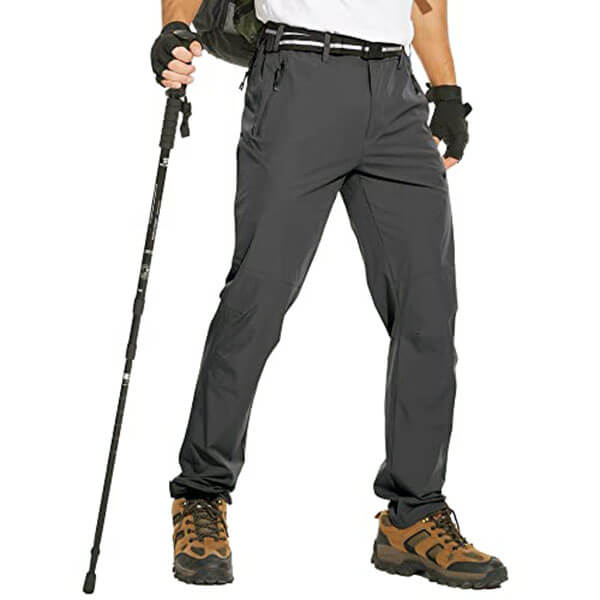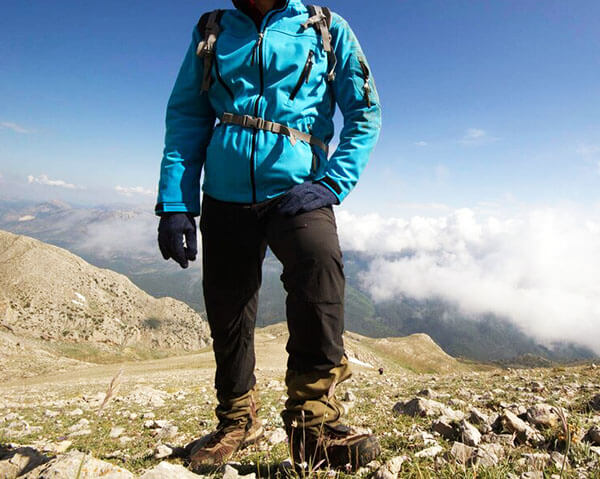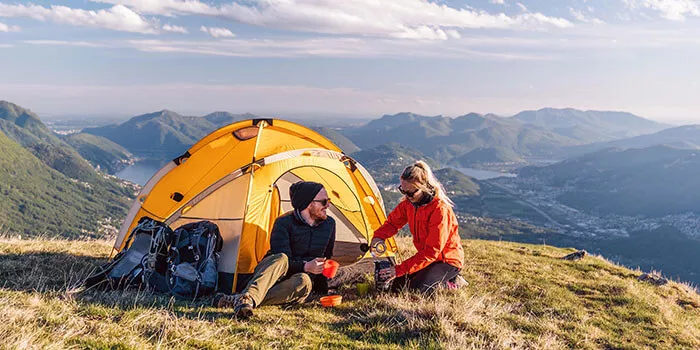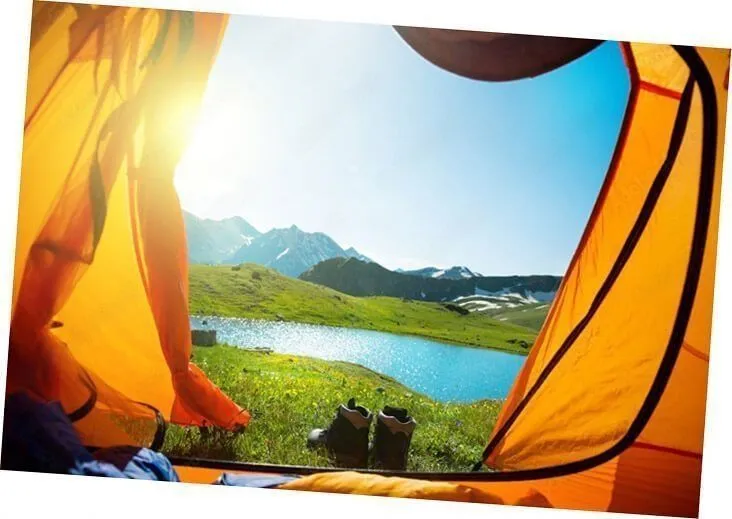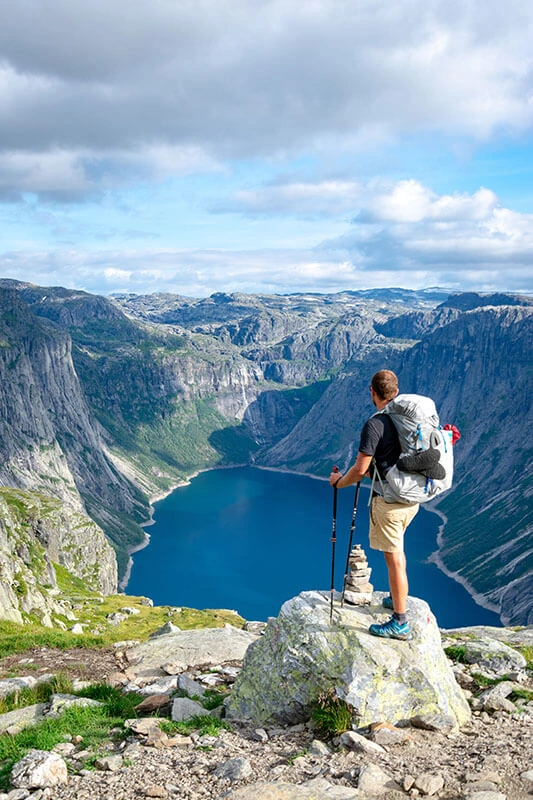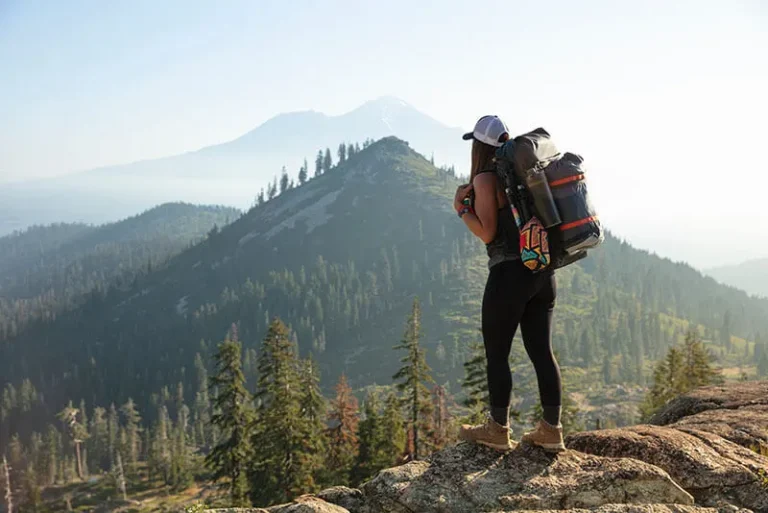What Winter hiking Pants Should I Wear for Cold weather?
If you enjoy hiking in the winter, it is essential to be aware of the importance of proper clothing and layering. Winter weather presents increased risks while hiking, such as frostbite and hypothermia. The right winter hiking gear will help keep you warm, dry, and protected against harsh conditions.
When layering your clothing for a winter hike, always start with a base layer of wool or synthetic material that will wick away sweat. Add an insulating layer of down or synthetic material, followed by a waterproof and windproof outer layer. Be sure to wear a hat and gloves, to shield you from cold temperatures and pack extra layers in your backpack in case you get cold.
Winter Hiking Tips: the short version.
1. Invest in a good pair of hiking boots and socks – your feet will thank you for it.
2. Layer up – it might be cold outside, but you’ll be generating a lot of heat when you’re hiking.
3. Don’t forget your sunscreen – the sun can be just as strong in winter as it is in summer.
4. Be prepared for changing weather conditions – the weather can take a turn for the worse very quickly in winter.
5. Be aware of ice and snow – both can present a hazard when hiking in winter.
6. Take it slow – winter hiking can be more challenging than hiking in other seasons, so take your time and enjoy the scenery.
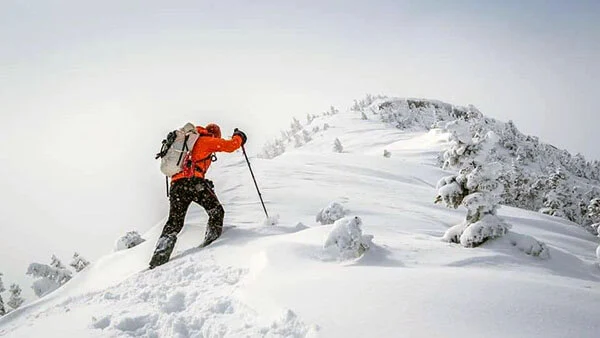
What kind of pants should I wear for winter hiking?
This is a question that many people ask when they are getting ready for their winter hiking and snowshoeing. There are many different types of chaps that you can wear for your winter hike, like fleece pants, and lined pants, but there are a few things that you should keep in mind when you are choosing the right pair of pants for winter hiking
First, you need to make sure that your clothes are made from a breathable material. This will help to keep you from getting too sweaty during your hike. Second, you need to make sure that your pants are waterproof. This will help to keep you dry if you happen to get caught in a rainstorm or if you cross a stream.
Third, you need to make sure that you wear the right fit. You don’t want your pants to be too loose or too tight. If your pants are too loose, they could get caught on something and tear. If your pants are too tight, they could restrict your movement and make it difficult to hike.
Fourth, you need to make sure they have enough pockets. You will need to be able to carry all of your essential items with you on your trip, so you need to make sure that you have enough pockets to hold everything.
Fifth, you need to make sure that your slacks are comfortable. You don’t want to be uncomfortable while you are hiking, so make sure that your pants fit well and that they are comfortable to wear. Remember that your base layer for winter hiking pants should be focused on keeping you warm and dry. You’ll want to consider your exertion levels and how much you sweat when choosing the right material and thickness for your base layer.
These are just a few tips to help you choose the right pair of pants for your winter hike. Just remember to keep these things in mind and you should be able to find the perfect pair of pants for your hike.
Can I wear snow pants for hiking?
If you’re planning on hiking in the snow, you might be wondering if you can wear snow pants. The answer is yes! Snow pants can actually be a great choice for hiking in the snow. They’ll keep you warm and dry, and they’ll also protect your legs from cold, wet, and potentially icy ground.
Of course, there are a few things to keep in mind if you’re going to wear snow pants for hiking. First, make sure that your pants are insulated and waterproof. You don’t want to get cold and wet halfway through your hike! Second, make sure that your pants are comfortable and allow you to move freely. You don’t want to be restricted in your movement, especially when you’re hiking over uneven terrain. Finally, make sure that your pants have plenty of pockets for all of your hiking essentials. You don’t want to be caught without your map or your snacks!
So, can you wear snow pants for hiking? Absolutely! Just make sure that they’re the right type of pants for the job.
How many layers should I wear for winter hiking?
This is a question that I get a lot, and it really depends on a few factors. But before we get into that, let me just say that there is no such thing as bad weather, only inappropriate clothing. With that said, here are a few things to consider when deciding how many layers to wear for winter hiking:
Layering Strategies When Winter Hiking
1. The temperature. Obviously, the colder it is outside, the more layers you’re going to need to stay warm. But don’t forget that you’ll be generating a lot of heat as you hike, so you don’t want to overdo it and end up sweating.
2. The wind chill factor. If it’s windy out, you’re going to want to add an extra layer or two to your outfit. Wind can make even a relatively mild day feel much colder.
3. The type of activity you’ll be doing. If you’re just going for a leisurely walk, you won’t need as many layers as if you’re planning on doing some strenuous hiking or climbing.
4. Your personal preferences. Some people are naturally warmer than others, so take that into account when deciding how many layers to wear.
Generally speaking, I would say that most people will need at least three layers for winter hiking: a base layer (such as long underwear), a mid-layer (such as a fleece), and an outer layer (such as a waterproof jacket). But again, it really depends on the conditions and your own personal comfort level. So experiment and see what works best for you!
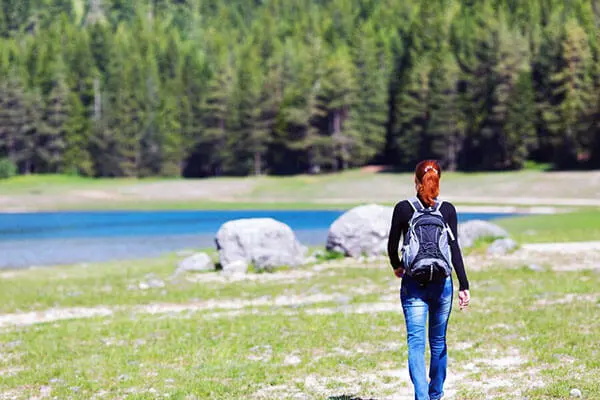
Is it OK to hike in jeans?
If you’re planning on hiking in jeans, you might as well just stay home. You’ll be uncomfortable, hot, and sweaty within minutes, and you’ll probably end up with a nasty case of chafing. Not to mention, jeans are just plain impractical for hiking. They’re heavy, they don’t breathe, and they’ll probably rip the first time you try to scramble up a hill. So do yourself a favor and leave the jeans at home.
How cold is too cold for hiking?
Hiking in the cold can be a great experience, as long as you are prepared for it. Dress in layers, wear proper footwear, and pack plenty of snacks and water. But how cold is too cold for hiking?
At what temperature does hiking become more of a chore than a fun outdoor activity? We asked several experienced hikers to weigh in on the matter.
“I’ve hiked in temperatures as low as -40 degrees Fahrenheit,” said one hiker. “As long as you dress properly, it’s really not that bad.”
Another hiker said that she generally doesn’t hike when the temperature is below freezing, but she has gone out in snowstorms with temperatures in the teens.
“For me, it’s more about the wind chill than the actual temperature,” she said. “If it’s windy and cold, I’m not going hiking.”
So there you have it – there is no definitive answer to the question of how cold is too cold for hiking. It really depends on the individual and their tolerance for cold weather. Just be sure to dress appropriately and pack plenty of food and water, and you should be fine.
Are softshell pants good for snow?
There’s nothing quite like a good pair of softshell pants for a winter hike. They are more windproof than regular trousers. They keep you warm while allowing you to move freely, and they’re also great for layering. Plus, they look good with a pair of hiking boots. However, there are a few things to keep in mind when choosing soft-shell pants for hiking in the snow. First, make sure they’re waterproof. You don’t want to be caught in a snowstorm without a good pair of pants that will keep you dry. Second, choose a pair that’s breathable. You’ll be working up a sweat as you hike, so you’ll want a pair of pants that will allow your skin to breathe. Finally, make sure they’re comfortable. You’ll be spending a lot of time in them, so you want a pair of pants that won’t restrict your movement or cause you any discomfort.
Softshell pants are the best pants for the outdoors! They’re stretchy and comfortable, and they help you move around easily. That makes them perfect for hiking, climbing, and backcountry skiing.
How are softshell hiking pants different from ski pants?
Cold-weather hikes are all about finding that perfect balance between staying warm and not overheating. And let me tell you, it ain’t easy. Ski winter pants might give you some protection from the cold days, but they’re not great at regulating your body temperature. And the bulky, baggy fit doesn’t help either when you’re trying to carry as little weight as possible.
In the great debate of snowshoeing vs. cross-country skiing vs hiking, there are pros and cons to each. Snowshoeing is great for those who want to move quickly through the snow, but it can be tiring to constantly lift your feet. Cross-country skiing is a great workout, but it can be difficult to keep your balance. Hiking is a great way to get some fresh air, but you have to watch out for the occasional ice patch.
Recommended Winter Hiking Pants:
Best Overall Winter Hiking Pant: CQR Men’s Tactical Pants
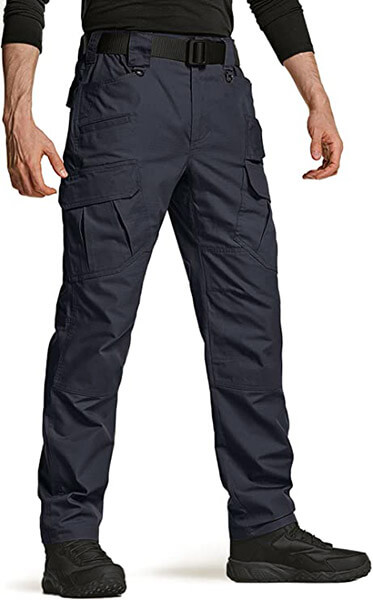
There’s no denying that the CQR Men’s Tactical Pants are the best overall winter hiking pants on the market. They’re made with a tough and durable material that can withstand the elements, and they’re also comfortable and stylish. But what really sets them apart from the competition is their ability to keep you warm in the winter and cool in the summer. That’s right, these pants are made with a thermal regulation system that regulates your body temperature, so you’ll always be comfortable no matter what the weather is like. And if that’s not enough, they also have a water-resistant finish that repels water and stains, so you’ll always look your best. Perfect fit thanks to the elastic Band & Button Closure, plenty of pockets to carry equipment and personal items.
So if you’re looking for a pant that can do it all, the CQR Men’s Tactical Pants are the way to go.
Best Active/High Exertion Pants:
TBMPOY Men’s Outdoor Quick-Dry Lightweight Waterproof Hiking Mountain Pants
These hiking and snowshoeing pants are the perfect choice for any man who wants to be comfortable and stylish while enjoying the great outdoors! They are lightweight, water-resistant, and windproof, making them perfect for any activity. The knee design allows you to stretch freely, is anti-friction, and wrinkle-free, and the adjustable waistband makes sure your waist is always comfortable. The belt is also a great addition, making sure you look good while enjoying the outdoors!
Don’t leave the house without your winter hiking clothes! Whether you’re scaling mountains, ice skating, skiing, hiking, climbing, or fishing, these waterproof pants will keep you comfortable and looking good.
Best Extreme Cold Winter Hiking Pant: REI Co-op XeroDry GTX Pants – Men’s
Looking for a pair of pants that will keep you dry and comfortable in any weather? Look no further than the REI Co-op XeroDry GTX Pants! These pants are made for really cold weather, come with a waterproof and breathable Gore-Tex fabric, and are lined with a comfortable mesh fabric that will keep you cool and dry all day long. The best winter hiking Pants also feature a zippered fly and waistband, as well as zippered pockets to keep your belongings safe and dry.
Specs:
GORE-TEX Paclite® is the perfect shell for when you want to be windproof, waterproof, and extremely breathable–but lightweight and easy to pack. The durable water repellent (DWR), while the articulation at the knees and under-leg gussets provide ease of movement. The waistband has an elastic back and a drawcord for a fine-tuned fit, and the zippered hand pockets secure essentials. The pants pack into the left-hand pocket for easy transport, and the ankle zips with snaps make for easy on and off, while also improving the fit over boots. The boot hook keeps pants in place when the trail turns brushy.
With the proper clothing and gear, you can safely enjoy the beauty of nature in the winter months. Just be sure to dress for the occasion and be prepared for whatever the weather may bring.


